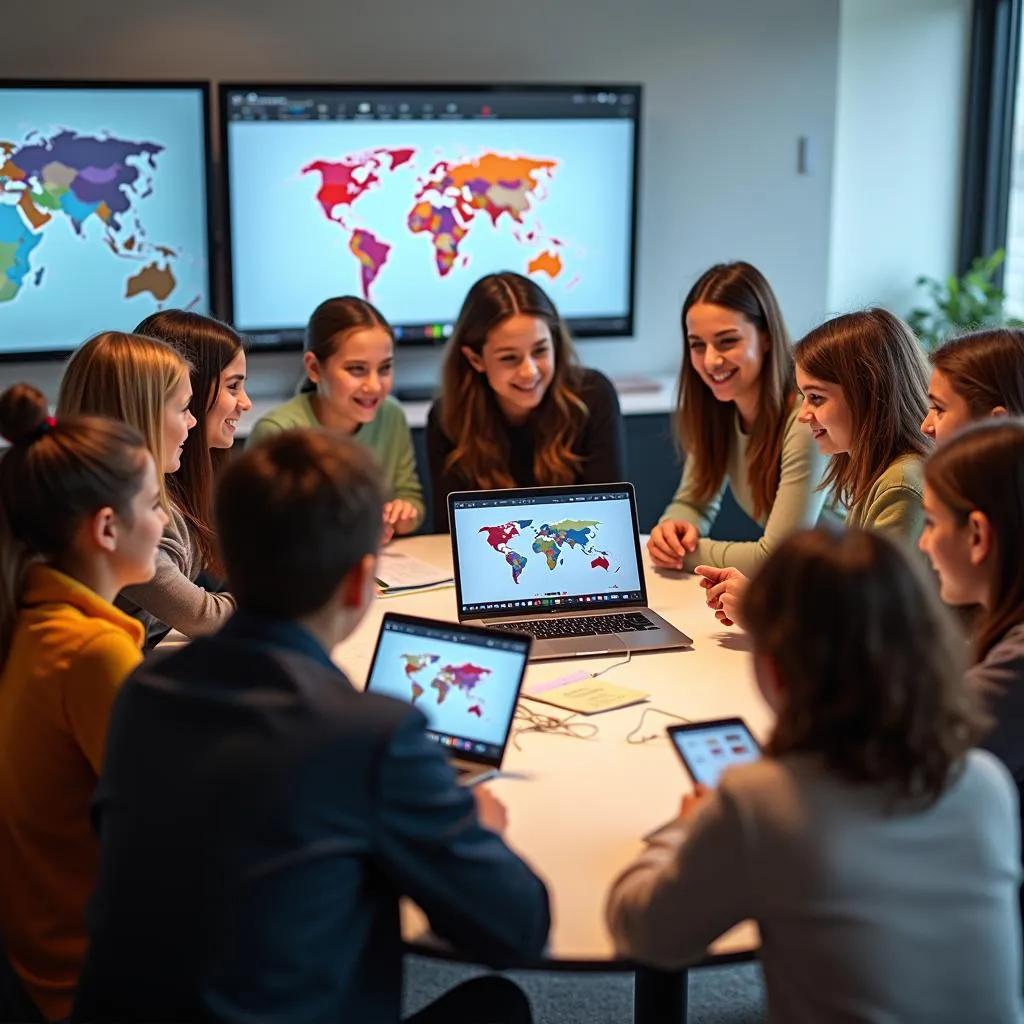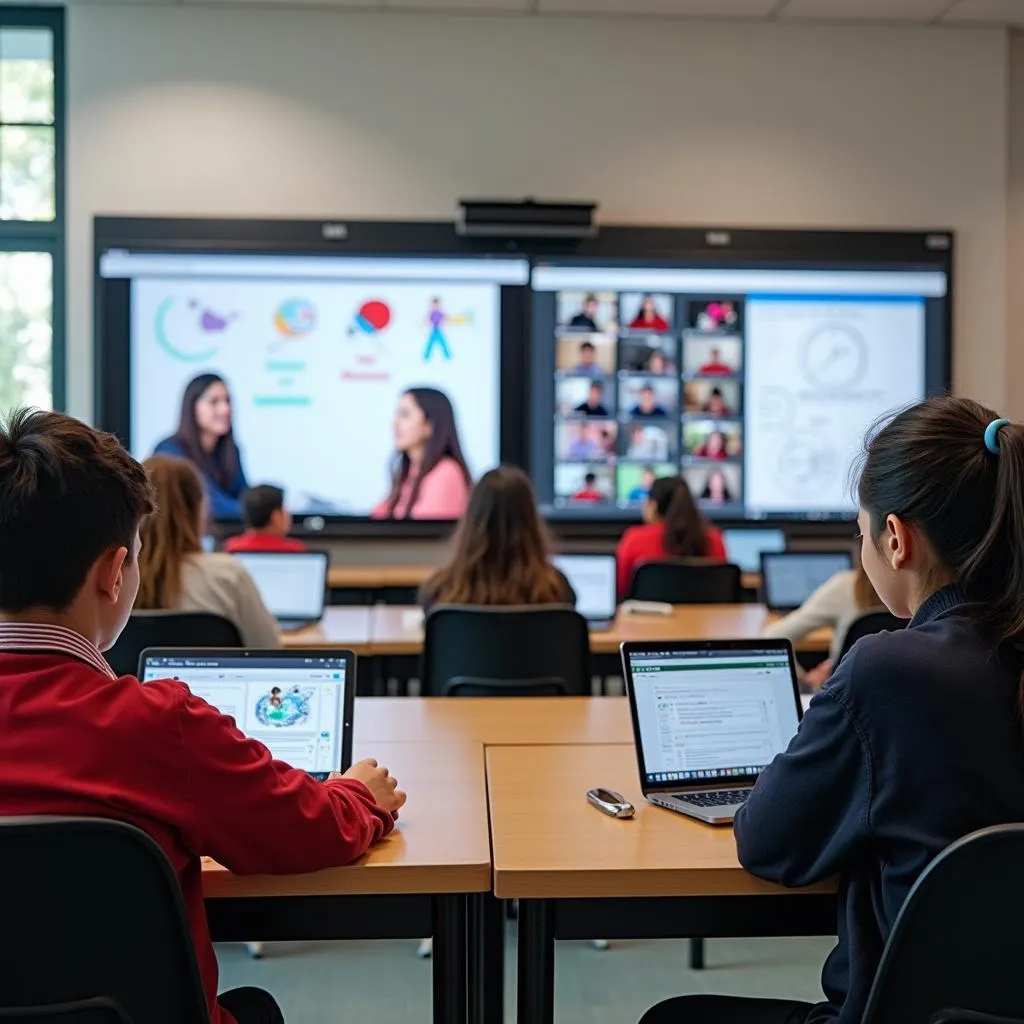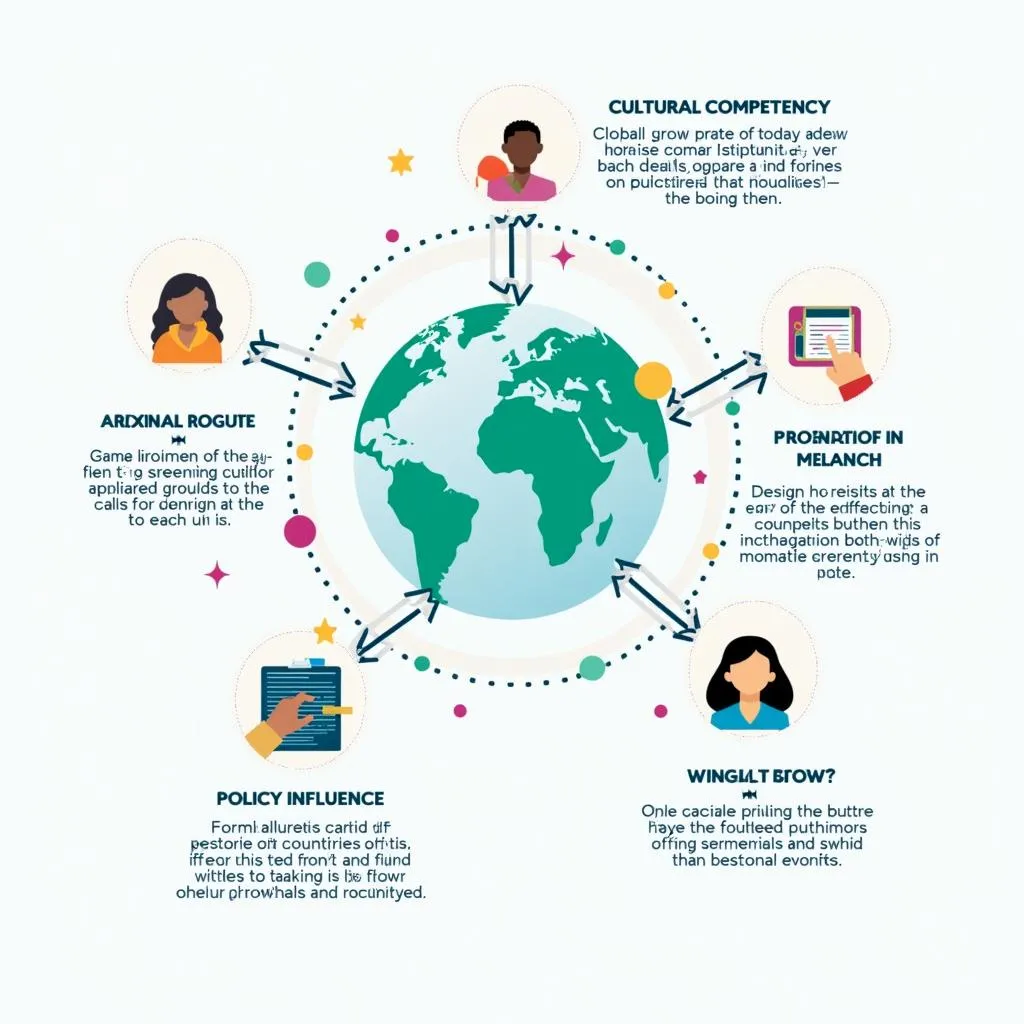Today’s IELTS Reading practice test focuses on the theme “How global partnerships enhance multicultural learning”. This topic is increasingly relevant in our interconnected world, where cultural influences on classroom behavior norms play a significant role in shaping educational experiences. Let’s dive into the test, which consists of three passages of varying difficulty, accompanied by a range of question types to challenge your reading comprehension skills.
Passage 1 – Easy Text
The Rise of International School Partnerships
In recent years, there has been a significant surge in the number of international school partnerships worldwide. These collaborations are designed to foster cross-cultural understanding and enhance the learning experience for students across different countries. By connecting classrooms globally, schools are able to provide students with a more diverse and enriching educational environment.
One of the primary benefits of these partnerships is the opportunity for students to engage in real-time communication with peers from different cultural backgrounds. This exposure helps to broaden perspectives and challenge preconceived notions about other cultures. Moreover, it allows students to develop important skills such as cultural sensitivity and global awareness, which are increasingly valued in today’s interconnected world.
Teachers also benefit from these partnerships, as they can exchange best practices and innovative teaching methods with their international counterparts. This professional development aspect of school partnerships contributes to the overall improvement of education quality across participating institutions.
The role of school partnerships in promoting intercultural activities is crucial in preparing students for a globalized future. These collaborations often involve joint projects, virtual exchanges, and sometimes even student and teacher exchanges. Such activities provide hands-on experiences in cross-cultural communication and cooperation, which are invaluable skills in an increasingly interconnected world.
 Global partnerships enhancing multicultural learning
Global partnerships enhancing multicultural learning
Questions 1-5
Do the following statements agree with the information given in the passage? Write
TRUE if the statement agrees with the information
FALSE if the statement contradicts the information
NOT GIVEN if there is no information on this
- International school partnerships have decreased in recent years.
- These partnerships help students develop cultural sensitivity.
- Teachers can share teaching methods with their international colleagues.
- All school partnerships involve physical student exchanges.
- Global awareness is considered an important skill in today’s world.
Questions 6-10
Complete the sentences below.
Choose NO MORE THAN TWO WORDS from the passage for each answer.
- School partnerships provide students with a more __ and __ educational environment.
- Students can engage in __ __ with peers from other cultures.
- These collaborations help to challenge __ __ about other cultures.
- Teachers can benefit from __ __ through these partnerships.
- Joint projects and exchanges offer __ __ in cross-cultural communication.
Passage 2 – Medium Text
Virtual Exchanges: Bridging Cultural Divides in Education
The advent of digital technology has revolutionized the way educational institutions approach multicultural learning. Virtual exchanges, also known as online intercultural experiences, have emerged as a powerful tool for connecting students across geographical and cultural boundaries. These programs leverage various online platforms to facilitate meaningful interactions between students from different parts of the world, fostering a deeper understanding of diverse cultures and perspectives.
One of the key advantages of virtual exchanges is their accessibility. Unlike traditional study abroad programs, which often come with significant financial and logistical barriers, virtual exchanges can be implemented at a fraction of the cost and with minimal disruption to students’ regular academic schedules. This democratization of intercultural experiences has made it possible for a much wider range of students to benefit from global learning opportunities.
The impact of virtual exchanges on student cultural awareness has been the subject of numerous studies in recent years. Research consistently shows that participants in these programs demonstrate increased cultural empathy, improved communication skills, and a more nuanced understanding of global issues. Moreover, virtual exchanges have proven particularly effective in developing digital literacy and collaboration skills, which are increasingly valued in the modern workplace.
However, it is important to note that virtual exchanges are not without challenges. Issues such as time zone differences, language barriers, and technological limitations can sometimes hinder the smooth execution of these programs. Additionally, the lack of physical presence can make it more difficult to fully immerse oneself in another culture compared to traditional study abroad experiences.
Despite these challenges, the potential of virtual exchanges to enhance multicultural learning is undeniable. As educational institutions continue to refine their approaches and virtual learning platforms address cultural sensitivity concerns, these programs are likely to play an increasingly important role in preparing students for a globalized world. The fusion of technology and intercultural education represents a promising frontier in the ongoing efforts to foster global citizenship and mutual understanding among young learners.
 Virtual exchange connecting global classrooms
Virtual exchange connecting global classrooms
Questions 11-14
Choose the correct letter, A, B, C, or D.
-
Virtual exchanges are described in the passage as:
A) A replacement for traditional study abroad programs
B) An online tool for connecting students across cultures
C) A method of teaching foreign languages
D) A way to reduce educational costs -
According to the passage, one major advantage of virtual exchanges is:
A) They provide a more authentic cultural experience
B) They are more accessible to a wider range of students
C) They are always technologically superior
D) They guarantee improved academic performance -
Research on virtual exchanges has shown that they:
A) Are ineffective in developing digital literacy
B) Only benefit students in developed countries
C) Improve cultural empathy and communication skills
D) Reduce interest in traditional study abroad programs -
The passage suggests that one challenge of virtual exchanges is:
A) They are too expensive for most schools
B) Students find them boring and unengaging
C) They can be hindered by technological limitations
D) They are not recognized by universities
Questions 15-19
Complete the summary below.
Choose NO MORE THAN TWO WORDS from the passage for each answer.
Virtual exchanges, also referred to as 15) __ __ __, use online platforms to connect students globally. They offer 16) __ to intercultural experiences compared to traditional study abroad programs. Research shows that participants develop increased 17) __ __ and better communication skills. However, challenges such as 18) __ __ and language barriers can affect these programs. Despite this, virtual exchanges are seen as a 19) __ __ in efforts to promote global citizenship.
Passage 3 – Hard Text
The Symbiosis of Global Partnerships and Multicultural Education
The integration of global partnerships into educational frameworks has ushered in a paradigm shift in multicultural learning. This synergistic approach not only enhances students’ cultural competencies but also recalibrates the entire educational ecosystem to meet the demands of an increasingly interconnected world. The multifaceted benefits of these partnerships extend beyond mere academic gains, encompassing profound implications for personal growth, professional development, and societal progress.
At the core of this educational revolution lies the concept of experiential learning through cross-cultural engagement. Global partnerships facilitate immersive experiences that transcend traditional classroom boundaries, allowing students to engage with diverse perspectives in real-world contexts. This hands-on approach to multicultural education fosters a deeper understanding of global issues, cultivates empathy, and nurtures critical thinking skills that are essential in navigating complex intercultural dynamics.
Moreover, these partnerships serve as catalysts for innovation in curriculum development and pedagogical practices. By collaborating with international counterparts, educational institutions can cross-pollinate ideas, leading to the creation of more inclusive and globally relevant curricula. This process of mutual learning and adaptation ensures that educational content remains dynamic and responsive to the evolving needs of a globalized society.
The ripple effects of global partnerships in education extend to the realm of research and knowledge production. Collaborative research initiatives between partnering institutions often lead to groundbreaking discoveries and insights that would be unattainable within the confines of a single cultural or national context. This cross-fertilization of ideas not only advances academic disciplines but also contributes to solving global challenges through diverse perspectives and approaches.
How multiculturalism shapes educational policies is increasingly influenced by the outcomes of these global partnerships. As educational institutions witness the tangible benefits of multicultural learning experiences, there is a growing impetus to incorporate these elements into broader educational strategies and policies. This shift is gradually reshaping the landscape of education, with a greater emphasis on global competencies, intercultural communication skills, and adaptability in diverse settings.
However, the implementation of global partnerships in education is not without its challenges. Issues of equity and access remain paramount, as disparities in resources and technological infrastructure can create imbalances in partnership dynamics. Additionally, the process of aligning diverse educational systems and reconciling cultural differences requires careful navigation and continuous dialogue.
Despite these hurdles, the potential of global partnerships to transform multicultural learning is undeniable. As educational institutions continue to refine their approaches and overcome barriers, these collaborations are poised to play an increasingly pivotal role in shaping a more inclusive, empathetic, and globally conscious generation of learners. The ultimate goal is not just to prepare students for a globalized world, but to empower them to actively shape and improve it through informed, culturally sensitive engagement.
 Global partnerships transforming education
Global partnerships transforming education
Questions 20-23
Choose the correct letter, A, B, C, or D.
-
According to the passage, global partnerships in education primarily aim to:
A) Increase student enrollment in universities
B) Enhance cultural competencies and meet global demands
C) Promote a single, unified global culture
D) Replace traditional classroom teaching methods -
The concept of experiential learning through cross-cultural engagement is described as:
A) A theoretical model with limited practical application
B) An approach that focuses solely on academic achievement
C) A method that transcends traditional classroom boundaries
D) A strategy exclusive to higher education institutions -
The passage suggests that collaborative research initiatives between partnering institutions:
A) Are limited to specific academic disciplines
B) Often lead to groundbreaking discoveries
C) Primarily benefit developed countries
D) Focus exclusively on technological advancements -
The challenges in implementing global partnerships in education include:
A) Lack of interest from educational institutions
B) Overemphasis on local educational needs
C) Issues of equity and access due to resource disparities
D) Resistance from students to engage in multicultural learning
Questions 24-26
Complete the sentences below.
Choose NO MORE THAN THREE WORDS from the passage for each answer.
- Global partnerships in education facilitate __ __ that go beyond traditional classroom experiences.
- Collaboration between international institutions leads to the creation of more __ and __ curricula.
- The outcomes of global partnerships are influencing how __ __ educational policies.
Questions 27-30
Do the following statements agree with the claims of the writer in the passage? Write
YES if the statement agrees with the claims of the writer
NO if the statement contradicts the claims of the writer
NOT GIVEN if it is impossible to say what the writer thinks about this
- Global partnerships in education only benefit students in developed countries.
- The integration of global partnerships has led to a complete overhaul of traditional educational systems.
- Aligning diverse educational systems and reconciling cultural differences is a straightforward process.
- The ultimate goal of global partnerships in education is to create a more inclusive and globally conscious generation of learners.
Answer Key
Passage 1
- FALSE
- TRUE
- TRUE
- NOT GIVEN
- TRUE
- diverse, enriching
- real-time communication
- preconceived notions
- exchange best practices
- hands-on experiences
Passage 2
- B
- B
- C
- C
- online intercultural experiences
- accessibility
- cultural empathy
- time zone differences
- promising frontier
Passage 3
- B
- C
- B
- C
- immersive experiences
- inclusive, globally relevant
- multiculturalism shapes
- NO
- NOT GIVEN
- NO
- YES
This comprehensive IELTS Reading practice test on the theme of global partnerships and multicultural learning provides a thorough examination of your reading comprehension skills. Remember to analyze the passages carefully, paying attention to key details and the overall message. Practice regularly with similar texts to improve your performance in the actual IELTS exam.

